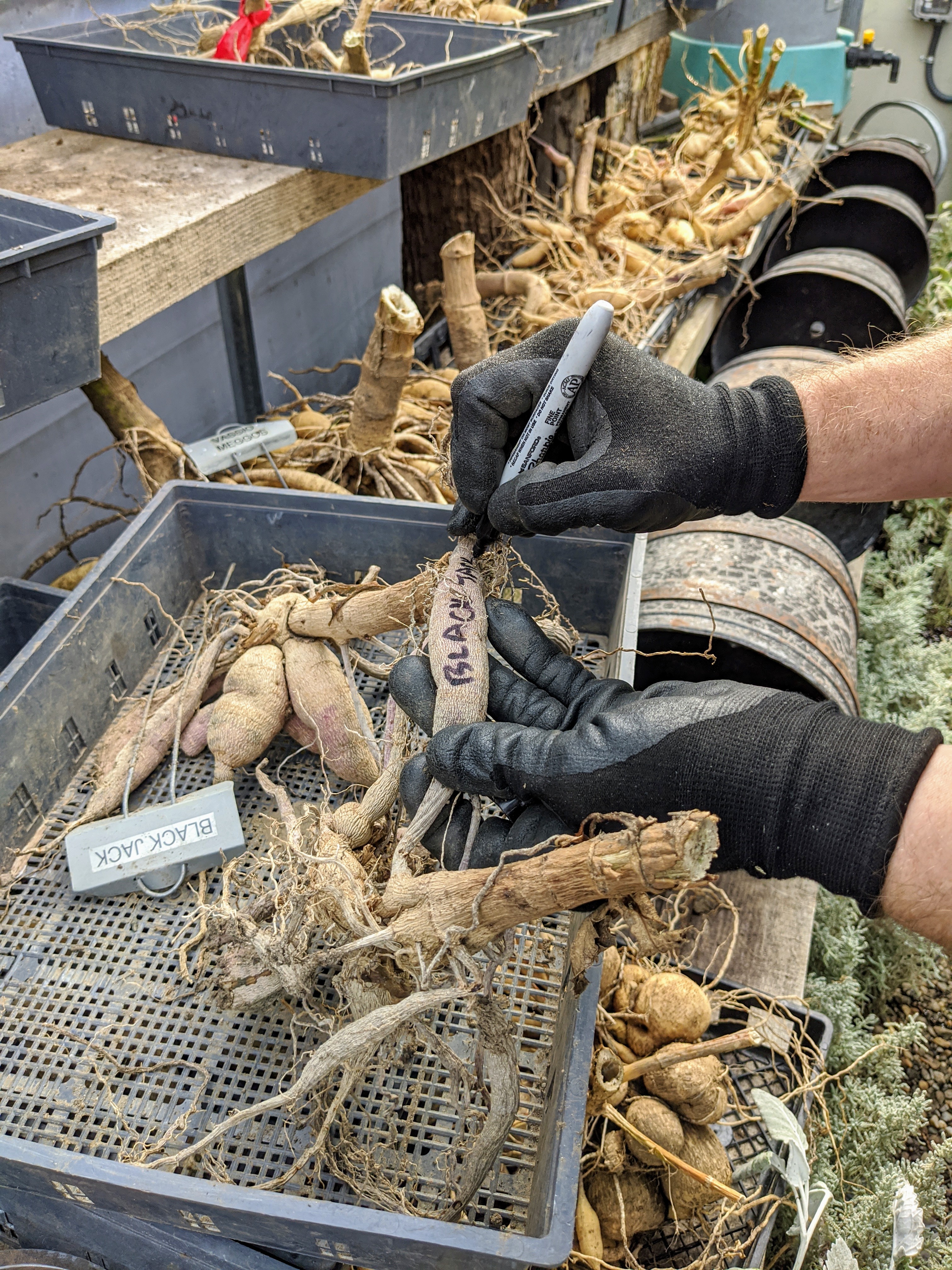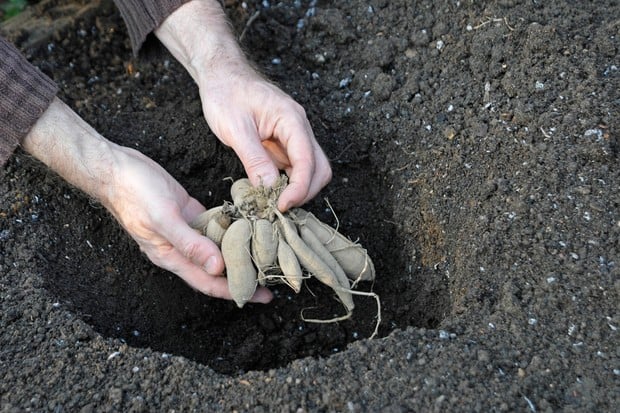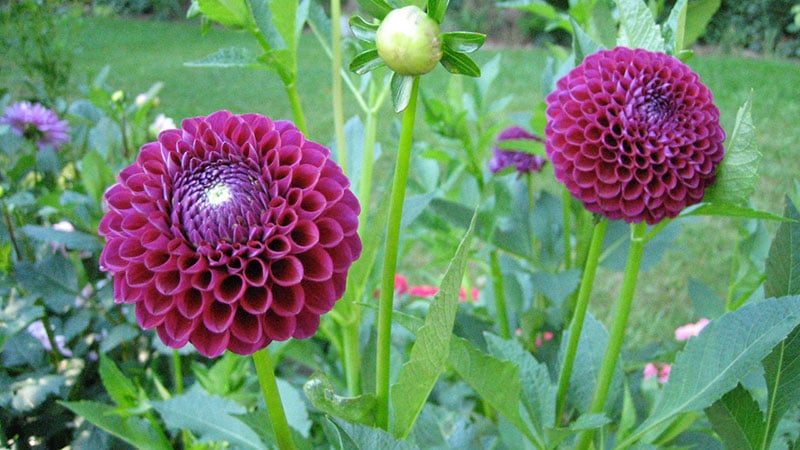Reviving Dahlia Tubers After Winter: An Overview
Spring is a critical time for dahlia tuber care, as it sets the stage for healthy plant growth throughout the gardening season. Proper handling of dahlia tubers in spring is essential to ensure a vibrant and bountiful display of these beautiful flowers in your garden. This comprehensive guide will walk you through the process of what to do with dahlia tubers in spring, covering essential steps from reviving tubers after winter to preserving them for future seasons.
Preparing Dahlia Tubers for Spring Planting
Once winter has passed, it’s time to start preparing your dahlia tubers for the upcoming planting season. This process involves several essential steps to ensure healthy growth and an abundant bloom. Here’s what to do with dahlia tubers in spring to get them ready for planting:
First, gently clean the tubers by removing any excess soil. Be cautious not to damage the delicate parts of the tuber during this process. Once cleaned, carefully inspect each tuber for any signs of damage, such as soft or rotten spots, or visible pests. Discard any tubers that show severe damage, as they may not survive the planting process.
Proper storage is crucial for dahlia tubers during the winter months. Ideally, they should be stored in a cool, dark, and well-ventilated area with temperatures between 40-50°F (4-10°C). Before planting, ensure the tubers have been kept in these conditions to minimize the risk of rot or disease. If you notice any signs of mold or rot during inspection, cut away the affected areas with a clean, sharp knife and allow the tuber to dry before planting.
How to Plant Dahlia Tubers in Spring
Planting dahlia tubers in spring is a rewarding experience that requires careful planning and execution. Follow these steps to ensure a successful planting process:
Selecting the right location is crucial for dahlia growth. Choose a spot with full sun (at least 6-8 hours of direct sunlight) and well-draining soil. Dahlias thrive in slightly acidic to neutral soil pH levels, typically between 6.0 and 7.0.
Before planting, prepare the soil by loosening it and removing any rocks, roots, or debris. Mix in a generous amount of organic matter, such as compost or well-rotted manure, to improve soil structure and fertility. This step is essential for promoting healthy root development and robust plant growth.
Plant dahlia tubers with the “eyes” or growing points facing up, approximately 2-4 inches (5-10 cm) deep, depending on the size of the tuber. Space tubers 12-18 inches (30-45 cm) apart to provide adequate room for growth. After planting, gently water the area to settle the soil around the tubers and promote root contact.
Monitor the progress of your dahlia tubers throughout the spring season. As they begin to sprout and grow, ensure they receive adequate water and nutrients. However, be cautious not to overwater, as this can lead to rot and other diseases. Aim to maintain consistently moist, but not waterlogged, soil conditions.
Nurturing Dahlia Tubers: Spring Care Tips
Once your dahlia tubers are planted, it’s essential to provide them with proper care to ensure healthy growth and an abundant bloom. Here are some expert tips on what to do with dahlia tubers in spring to keep them thriving:
Watering: Dahlias require consistent moisture, especially during the spring growing season. However, avoid overwatering, as this can lead to rot and other diseases. Aim to maintain consistently moist, but not waterlogged, soil conditions. Water the base of the plant, taking care not to wet the foliage, to minimize the risk of fungal infections.
Fertilizing: Feed your dahlia tubers with a balanced, slow-release fertilizer at planting time. This will provide essential nutrients for early growth. As the plants mature, consider using a fertilizer with higher phosphorus content to promote blooming. Regularly test your soil to monitor its nutrient content and adjust your fertilization schedule accordingly.
Monitoring for Pests and Diseases: Keep a close eye on your dahlia tubers for signs of pests or diseases. Common issues include aphids, spider mites, powdery mildew, and botrytis. If you notice any signs of infestation or infection, treat the problem promptly with organic or chemical controls, as appropriate. Preventative measures, such as regular cleaning and removal of dead plant material, can help minimize the risk of pests and diseases.
Dividing and Propagating Dahlia Tubers
Dividing and propagating dahlia tubers in spring offers several benefits, including increasing your dahlia stock and maintaining healthy plants. Here’s a step-by-step guide on how to divide and propagate dahlia tubers:
Divide dahlia tubers in early spring, after new growth has emerged but before the plants become too large. Carefully dig up the tuber clump, taking care not to damage the delicate roots. Gently brush off any excess soil, and use a clean, sharp knife to separate the individual tubers. Each tuber should have at least one “eye” or growing point attached.
Once divided, allow the tubers to dry for a day or two in a cool, well-ventilated area. This step helps to prevent rot and encourages wound healing. After drying, dust the cut surfaces with a fungicide powder to minimize the risk of infection.
Plant the divided tubers in prepared soil, following the guidelines provided in the “How to Plant Dahlia Tubers in Spring” section. Water them thoroughly, and care for them as you would any other dahlia tuber.
Propagating dahlia tubers through cuttings is another effective method for increasing your stock. In late spring, select healthy, disease-free stems and cut them into 4-6 inch (10-15 cm) sections, ensuring each cutting has at least one leaf node. Remove the lower leaves, and dip the cut ends in rooting hormone. Plant the cuttings in a well-draining, moist potting mix, and cover them with a plastic bag or dome to maintain humidity. Roots should form within 2-4 weeks, at which point you can transplant the new plants into your garden.
Troubleshooting Common Dahlia Tuber Issues in Spring
Spring can present several challenges for dahlia tubers, but with proper care and attention, you can overcome these obstacles. Here are some common issues gardeners face with dahlia tubers in spring and practical solutions to help you succeed:
Rot
Rot can occur when tubers are exposed to excessive moisture or poor drainage. To prevent rot, ensure your dahlia tubers are planted in well-draining soil and avoid overwatering. If you notice signs of rot, such as soft or mushy spots, cut away the affected areas and allow the tuber to dry before replanting.
Poor Germination
Dahlia tubers may experience poor germination due to various factors, including low temperatures, improper storage, or damaged tubers. To encourage germination, plant your tubers in well-prepared soil with adequate warmth (ideally, above 60°F/15°C). If germination is still poor, consider purchasing new tubers or attempting to propagate from healthy cuttings.
Slow Growth
Slow growth in dahlia tubers can be caused by insufficient nutrients, poor soil conditions, or inadequate watering. Address slow growth by ensuring your dahlia tubers receive proper care, including regular watering, fertilization, and soil amendments as needed. Additionally, monitor your plants for signs of pests or diseases, which can also hinder growth.
Enhancing Garden Aesthetics with Dahlia Tubers
Dahlia tubers are a versatile and captivating addition to any spring garden. With their wide range of colors, shapes, and sizes, dahlias offer endless possibilities for creative design and arrangement. Here are some ideas to inspire you and help you enhance your garden’s visual appeal with dahlia tubers:
Mass Planting
Mass planting is a simple yet effective way to create a bold and dramatic impact in your garden. Choose a single variety or color scheme and plant dahlia tubers in groups or blocks for a stunning display of color and texture.
Mixed Borders
Combine dahlia tubers with other spring-flowering perennials and annuals to create a vibrant and dynamic mixed border. Consider incorporating plants with varying heights, textures, and bloom times to ensure continuous interest throughout the season.
Container Gardens
Dahlia tubers are an excellent choice for container gardens, allowing you to showcase their beauty on patios, decks, or balconies. Choose a mix of dahlia varieties with different heights and growth habits to create a visually appealing and layered container arrangement.
Cut Flower Gardens
Dahlia tubers are prized for their long-lasting and showy blooms, making them an ideal choice for cut flower gardens. Plant dahlia tubers in rows or blocks, and regularly harvest the flowers to enjoy indoors. This practice also encourages the plants to produce more blooms, extending the flowering season.
Vertical Gardens
Utilize dahlia tubers in vertical gardens to add height, color, and visual interest to your outdoor space. Train dahlia plants to climb trellises, obelisks, or other vertical structures, or create a living wall by planting dahlia tubers in pockets or pouches attached to a wall or fence.
Preserving Dahlia Tubers for Future Seasons
Properly storing dahlia tubers during the summer and fall months is crucial for ensuring their longevity and readiness for the next spring season. By following these steps, you can maintain healthy dahlia tubers and enjoy their vibrant blooms year after year:
Digging Up Tubers
Wait until the first frost has blackened the dahlia foliage before digging up the tubers. Use a garden fork to gently lift the tuber clumps from the ground, taking care not to damage them. Shake off excess soil and allow the tubers to dry in a cool, well-ventilated area for a few days.
Cleaning and Inspecting Tubers
Gently brush off any remaining soil from the tuber clumps, and inspect them for signs of damage, disease, or pests. Remove any damaged or diseased sections, and allow the cut surfaces to dry before storing. Discard any tubers that are severely damaged or infested with pests.
Dividing Tubers
Divide the tuber clumps into individual tubers, ensuring each piece has at least one “eye” or growing point. This step not only helps maintain healthy tubers but also allows you to propagate and share your dahlia collection.
Storing Tubers
Choose a cool, dark, and well-ventilated location for storing dahlia tubers. Ideal storage conditions include temperatures between 40-50°F (4-10°C) and relative humidity around 50-60%. Place the tubers in cardboard boxes, paper bags, or plastic storage bins, and cover them with peat moss, vermiculite, or wood shavings to maintain moisture and prevent decay.
Monitoring Tubers
Check on your stored dahlia tubers every 4-6 weeks to ensure they remain healthy and free from rot or pests. Remove any tubers that show signs of decay or damage to prevent the spread of disease. Replace the storage material if it becomes excessively dry or moldy.






